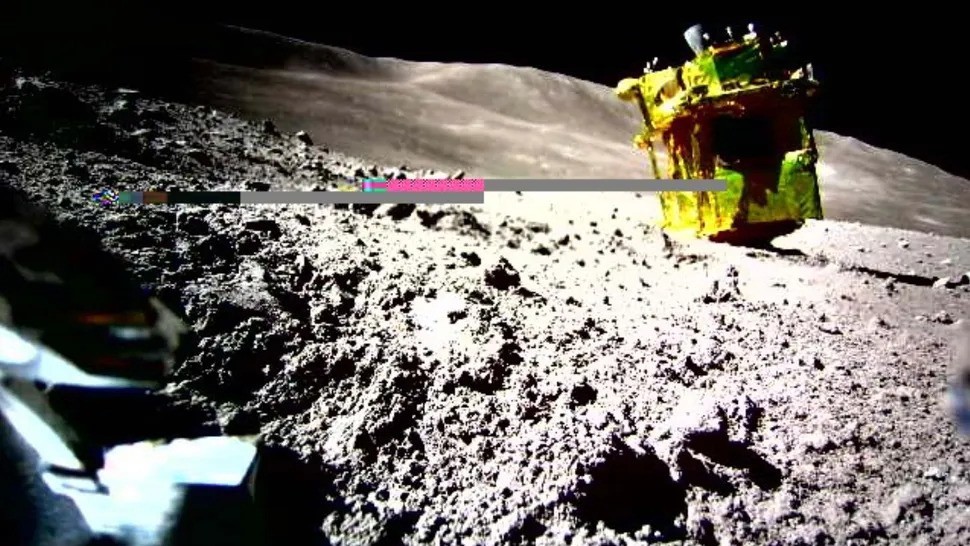
A new image released by Japan's space agency has revealed why its first moon lander has had trouble charging — despite making the most precise touchdown in lunar history, the stricken craft landed on its nose.
The Smart Lander for Investigating Moon (SLIM) arrived on the moon's surface on Friday (Jan. 19), making Japan the fifth country to land on the moon. But the craft shut down three hours after arrival because of an unknown fault with its solar cells.
Now, a new image taken by Sora-Q — a companion robot ejected from the lander as it descended — has revealed the source of the problem: sunlight isn't reaching the spaceship's solar cells because the craft is tipped 90 degrees from how it was designed to land.
"An abnormality in the main engine affected the landing attitude of the spacecraft, resulting in the solar panels currently being unable to charge," the Japan Aerospace Exploration Agency (JAXA) wrote in a statement on X, formerly Twitter, on Thursday (Jan. 25). "Data was successfully downloaded, and the multi-band imaging camera tested before power was turned off to preserve the battery."
The space agency attributes the mishap to one of SLIM's two main thrusters failing during the descent, causing the spacecraft to tip onto its nose.
This marred an otherwise impressive descent: the craft, designed to showcase state-of-the-art precision landing technologies, touched down within a target of 328 feet (100 meters). For contrast, previous landing zones are set with widths of about 6 miles (10 kilometers).
JAXA is the fifth national space agency to make a soft landing on the moon, the first being the U.S., followed by the former USSR, China and India. SLIM landed on the edge of a crater known as Shioli, a small crater within the larger Cyrillus crater located at the equator on the moon's near side.
To send the image back to mission control, Sora-Q relied upon a second companion to SLIM, called the Lunar Excursion Vehicle 1 (LEV-1), which is equipped with an antenna and an additional camera. After independently framing and snapping the photos, Sora-Q transmitted them to LEV-1, which sent them on to Earth — a feat which has pleased JAXA officials back home.
And though SLIM may be powered down, it’s not out for the count just yet. JAXA representatives say they have hopes the lander will hibernate until the angle of the sunlight at its landing position changes, potentially enabling it to return to life.







